#500 hour yoga teacher training in Chiang Mai
Text
Are you ready to take your yoga practice to the next level and become a certified teacher? If so, have you considered a 500 hour yoga teacher training in Chiang Mai? This beautiful city in Thailand offers an immersive experience that will not only deepen your knowledge of yoga but also transform your life. In this blog post, we’ll explore why Chiang Mai is the perfect destination for your 500 hour yoga teacher training and what benefits it can bring to both your personal growth and professional development. So let’s get started!
0 notes
Text
Thai Yoga Bodywork / Yoga Nexus
5 Points in a Thai Yoga Bodywork / Yoga Nexusby Bernie Gourley
It was October of 2013 and I found my way to the Meditation Hall at the Fireflies Ashram off Kanakapura Road outside Bangalore’s southern sprawl. That morning, I’d begin learning the sequence of actions of the Chiang Mai style of Thai Yoga Bodywork (TYB.) I would struggle to remember that sequence as I awkwardly groped about trying not to drive my thumb into the bones or nerve junctions of my fellow students. But over the course of those ten days, I progressed to the point that my awkwardness was less apparent, and I could get through the sequence without forgetting much.
I’d arrived in India with a long list of activities to try and skills to learn as part of a plan of self-betterment. That TYB course was the first item on the list to be scratched off. I’d been in the country a little over a month. The strange thing about that was that TYB was the activity farthest outside my comfort zone. I wasn’t a complete stranger to yoga or meditation when I arrived in India. And while I was new to the martial arts of Kalaripayattu and Muaythai, I’d practiced a Japanese martial art my entire adult life. So while I wasn’t skilled at those arts, I had a level of transferable confidence to counterbalance my lack of skill. The same couldn’t be said TYB. It was all new. But that’s the magic of moving around the world, everything is outside your comfort zone, so you might as well go big or go home.
Small world. A couple years later, I’d be in that same Meditation Hall for the capstone weekend of my 500-hour yoga teacher’s course. I remember lying in that Meditation Hall, resting after having learned the advanced cleansing practices (shatkarma) of hatha yoga. (By then there was an entirely new level outside my “comfort zone” as I’d purged my entire alimentary canal.) At any rate, the Fireflies Meditation Hall was just a piece of geographic connective tissue that linked my yogic and TYB educations. I’d like to discuss five more substantial links.
5.) Anxiety management: Let me begin with a theme that I mentioned in my introduction. It’s an aspect of personal development that I’ve spent a lot of time working on recently, and that’s moving outside one’s comfort zone to dispassionately observe one’s anxieties. Both Yoga and TYB present practitioners with opportunities to observe and tame anxieties in a safe way. In TYB, one’s anxiety might be about injuring the person one is working on, about doing a poor job, or it could even be just about touching strangers. People have various reasons—from various social anxieties to germophobia—for discomfort with physically touching people they don’t know well. (Being an introvert, I have a tinge of this discomfort that would likely be much worse if I hadn’t studied martial arts. But, having studied a grappling-centric martial art for so many years, I’d developed a bit of transferable confidence about being in close physical proximity with people I didn’t necessarily know well.)
In yoga, the sources of anxiety are often gravity related (e.g. inversions and arm balances), but can be quite varied. I mentioned shatkarma as another example. And I’ve found external breath retentions from pranayama to be a potent area in my own personal practice.
At any rate, what both Yoga and TYB do to help one take on one’s anxiety is to insist that one confront it in a mindful way. Just practicing forces one to experience the anxieties, but the crucial second ingredient is that one must keep one’s attention on the action—preventing one’s mind from engaging in the escalatory patterns by which it makes molehills into mountains. While it’s true that there are many other activities that this should be true of, it’s common in many fitness activities to practice distractions. People often blare portable music devices to drown out their body and mind as they exercise and practice other self-betterment activities. Such distractions aren’t an option in [good] TYB or Yoga instruction (Note: I say “good” because one can see a sad wave of distraction yogas out there that bury the sensations of practice in cute animals, alcohol, and—even–frat-house style raves.)
4.) Anatomical intuition: Both TYB and Yoga expand one’s understanding of the human body. A great feature for those who practice both systems is that the two systems are complementary. They present both overlapping and non-overlapping means to insight into the body. Yoga provides insight through all of one’s senses—not just the five we think of, but including proprioception (the sense by which a person is aware of the position of his or her own body parts and their movement) and balance. In other words, yoga allows one to see inside one’s own body as fully as possible. On the other hand, TYB offers the opportunity to learn about the wide range of variance in human bodies—feeling all their varied characteristics, strengths, and weaknesses.
I think a yoga teacher can learn a great deal by practicing TYB. It encourages a greater understanding of the strengths and limitations of others. At the same time, TYB practitioners benefit from yoga’s high degree of intra-bodily awareness because the Thai style involves many assisted stretches that require strength, balance, and awareness.
3.) Appreciating the Slow: Modern life shouts at one to do everything faster. Yoga and TYB are two activities in which there isn’t any payoff for being faster, and, in fact, there are costs. In TYB, the massaged individual will find a fast tempo massage less relaxing. If one has ever been handled by a masseuse or masseur like a baker making bread, one knows exactly what I’m talking about. Hatha Yoga also emphasizes slow movement. Even when one is doing an active style like Ashtanga Vinyasa Yoga, there’s an emphasis on maintaining control of the body throughout, and that requires engaging musculature to counter the forces of gravity and momentum.
2.) Core stability and muscular endurance: Both TYB and Yoga build and require core strength and muscular endurance. Bodywork is a physically demanding job. When one learns TYB, a great deal of attention goes into the minutiae of handling the client so as to minimize the stress and strain on one’s body. Still, there’s no way around the fact that one is manipulating another person’s body and one has to bear that weight so that the client can be relaxed as one stretches them out or turns them over. Commonly, those people will be larger and heavier than the person delivering the massage. Even if one isn’t doing TYB all day, one will likely feel it—perhaps all the more because one hasn’t developed that core strength and muscular endurance. Yoga can also help the TYB practitioner to keep supple in a job that can easily make a person sinewy.
On the other hand, yogis and yoginis can learn a thing or two about balance and control of the core from the challenging act of manipulating another person through their stretches.
1.) Attentiveness to Subtle Sensations: In yoga teacher training, one is often shown Wilder Penfield’s homunculus. Penfield was a doctor who studied the functional organization of the brain, and particularly the sensory and motor cortexes (the parts that process sensations and commands to move body parts.) He was eager to map the motor cortex so that he’d know what portions of damaged or cancerous tissue could be removed without causing paralysis or the like. At any rate, you’ve probably seen either a flat or 3-D version of the homunculus. It’s notable for its huge lips and hands and comparatively tiny chest and thighs. That’s because the size of a body part on the model doesn’t represent its anatomical size but rather its size in the brain, and our hands have a truly astounding piece of cerebral real estate.
What’s fascinating is that for all this capacity for feeling through our fingers, one has to practice to get the fullest out of that ability. In the beginning, it can be quite different to feel huge knots in the muscle during TYB sessions—even though our ability to differentiate tiny tactile differences is tremendous. In yoga one isn’t so much engaged in feeling with one’s fingertips as one is with one’s internal sensory suite, but the point remains that we have a great deal of capacity that most people leave unused.
I suspect there are many more points of confluence between TYB and Yoga that haven’t occurred to me. If you’ve got one, feel free to comment below.
About Bernie Gourley
An American writer and martial artist living Bangalore, India. A desk life and workday stressors once made him doughy and left him with an accumulation of minor health problems. As a result he begun an intense practice of yoga, started teaching yoga, learned the basics of Thai yoga bodywork (TYB) at the Inner Mountain School of Healing Arts and the Wat Pho Thai Traditional Massage School, and have continued to build a challenging martial arts practice. He has 500 hour yoga teacher certification (RYT500) and Children’s Yoga Teacher certification (RCYT) from the Yoga Alliance through a1000. His formal educational background is in the social sciences. He has two Master of Science degrees, one in International Affairs and the other in Economics. The former is from Georgia Tech and the latter is from Georgia State University.
Thai Yoga Massage
0 notes
Text
Thai Yoga Bodywork
5 Points in a Thai Yoga Bodywork / Yoga Nexus
by Bernie Gourley
It was October of 2013 and I found my way to the Meditation Hall at the Fireflies Ashram off Kanakapura Road outside Bangalore’s southern sprawl. That morning, I’d begin learning the sequence of actions of the Chiang Mai style of Thai Yoga Bodywork (TYB.) I would struggle to remember that sequence as I awkwardly groped about trying not to drive my thumb into the bones or nerve junctions of my fellow students. But over the course of those ten days, I progressed to the point that my awkwardness was less apparent, and I could get through the sequence without forgetting much. I’d arrived in India with a long list of activities to try and skills to learn as part of a plan of self-betterment. That TYB course was the first item on the list to be scratched off. I’d been in the country a little over a month. The strange thing about that was that TYB was the activity farthest outside my comfort zone. I wasn’t a complete stranger to yoga or meditation when I arrived in India. And while I was new to the martial arts of Kalaripayattu and Muaythai, I’d practiced a Japanese martial art my entire adult life. So while I wasn’t skilled at those arts, I had a level of transferable confidence to counterbalance my lack of skill. The same couldn’t be said TYB. It was all new. But that’s the magic of moving around the world, everything is outside your comfort zone, so you might as well go big or go home. Small world. A couple years later, I’d be in that same Meditation Hall for the capstone weekend of my 500-hour yoga teacher’s course. I remember lying in that Meditation Hall, resting after having learned the advanced cleansing practices (shatkarma) of hatha yoga. (By then there was an entirely new level outside my “comfort zone” as I’d purged my entire alimentary canal.) At any rate, the Fireflies Meditation Hall was just a piece of geographic connective tissue that linked my yogic and TYB educations. I’d like to discuss five more substantial links. 5.) Anxiety management: Let me begin with a theme that I mentioned in my introduction. It’s an aspect of personal development that I’ve spent a lot of time working on recently, and that’s moving outside one’s comfort zone to dispassionately observe one’s anxieties. Both Yoga and TYB present practitioners with opportunities to observe and tame anxieties in a safe way. In TYB, one’s anxiety might be about injuring the person one is working on, about doing a poor job, or it could even be just about touching strangers. People have various reasons—from various social anxieties to germophobia—for discomfort with physically touching people they don’t know well. (Being an introvert, I have a tinge of this discomfort that would likely be much worse if I hadn’t studied martial arts. But, having studied a grappling-centric martial art for so many years, I’d developed a bit of transferable confidence about being in close physical proximity with people I didn’t necessarily know well.) Fig 1. Fear of breaking others In yoga, the sources of anxiety are often gravity related (e.g. inversions and arm balances), but can be quite varied. I mentioned shatkarma as another example. And I’ve found external breath retentions from pranayama to be a potent area in my own personal practice. Fig. 2 Fear of breaking oneself At any rate, what both Yoga and TYB do to help one take on one’s anxiety is to insist that one confront it in a mindful way. Just practicing forces one to experience the anxieties, but the crucial second ingredient is that one must keep one’s attention on the action—preventing one’s mind from engaging in the escalatory patterns by which it makes molehills into mountains. While it’s true that there are many other activities that this should be true of, it’s common in many fitness activities to practice distractions. People often blare portable music devices to drown out their body and mind as they exercise and practice other self-betterment activities. Such distractions aren’t an option in [good] TYB or Yoga instruction (Note: I say “good” because one can see a sad wave of distraction yogas out there that bury the sensations of practice in cute animals, alcohol, and—even--frat-house style raves.) 4.) Anatomical intuition: Both TYB and Yoga expand one’s understanding of the human body. A great feature for those who practice both systems is that the two systems are complementary. They present both overlapping and non-overlapping means to insight into the body. Yoga provides insight through all of one’s senses—not just the five we think of, but including proprioception (the sense by which a person is aware of the position of his or her own body parts and their movement) and balance. In other words, yoga allows one to see inside one’s own body as fully as possible. On the other hand, TYB offers the opportunity to learn about the wide range of variance in human bodies—feeling all their varied characteristics, strengths, and weaknesses. Fig 3. Finding their limits I think a yoga teacher can learn a great deal by practicing TYB. It encourages a greater understanding of the strengths and limitations of others. At the same time, TYB practitioners benefit from yoga’s high degree of intra-bodily awareness because the Thai style involves many assisted stretches that require strength, balance, and awareness. Fig. 4 Discovering your own limits 3.) Appreciating the Slow: Modern life shouts at one to do everything faster. Yoga and TYB are two activities in which there isn’t any payoff for being faster, and, in fact, there are costs. In TYB, the massaged individual will find a fast tempo massage less relaxing. If one has ever been handled by a masseuse or masseur like a baker making bread, one knows exactly what I’m talking about. Hatha Yoga also emphasizes slow movement. Even when one is doing an active style like Ashtanga Vinyasa Yoga, there’s an emphasis on maintaining control of the body throughout, and that requires engaging musculature to counter the forces of gravity and momentum. Fig 5. Graceful manipulation attempted; This was that first course in October of 2013 Fig. 6 Control throughout motion 2.) Core stability and muscular endurance: Both TYB and Yoga build and require core strength and muscular endurance. Bodywork is a physically demanding job. When one learns TYB, a great deal of attention goes into the minutiae of handling the client so as to minimize the stress and strain on one’s body. Still, there’s no way around the fact that one is manipulating another person’s body and one has to bear that weight so that the client can be relaxed as one stretches them out or turns them over. Commonly, those people will be larger and heavier than the person delivering the massage. Even if one isn’t doing TYB all day, one will likely feel it—perhaps all the more because one hasn’t developed that core strength and muscular endurance. Yoga can also help the TYB practitioner to keep supple in a job that can easily make a person sinewy. On the other hand, yogis and yoginis can learn a thing or two about balance and control of the core from the challenging act of manipulating another person through their stretches. 1.) Attentiveness to Subtle Sensations: In yoga teacher training, one is often shown Wilder Penfield’s homunculus. Penfield was a doctor who studied the functional organization of the brain, and particularly the sensory and motor cortexes (the parts that process sensations and commands to move body parts.) He was eager to map the motor cortex so that he’d know what portions of damaged or cancerous tissue could be removed without causing paralysis or the like. At any rate, you’ve probably seen either a flat or 3-D version of the homunculus. It’s notable for its huge lips and hands and comparatively tiny chest and thighs. That’s because the size of a body part on the model doesn’t represent its anatomical size but rather its size in the brain, and our hands have a truly astounding piece of cerebral real estate. What’s fascinating is that for all this capacity for feeling through our fingers, one has to practice to get the fullest out of that ability. In the beginning, it can be quite different to feel huge knots in the muscle during TYB sessions—even though our ability to differentiate tiny tactile differences is tremendous. In yoga one isn’t so much engaged in feeling with one’s fingertips as one is with one’s internal sensory suite, but the point remains that we have a great deal of capacity that most people leave unused. I suspect there are many more points of confluence between TYB and Yoga that haven’t occurred to me. If you’ve got one, feel free to comment below. About Bernie Gourley An American writer and martial artist living Bangalore, India. A desk life and workday stressors once made him doughy and left him with an accumulation of minor health problems. As a result he begun an intense practice of yoga, started teaching yoga, learned the basics of Thai yoga bodywork (TYB) at the Inner Mountain School of Healing Arts and the Wat Pho Thai Traditional Massage School, and have continued to build a challenging martial arts practice. He has 500 hour yoga teacher certification (RYT500) and Children’s Yoga Teacher certification (RCYT) from the Yoga Alliance through a1000. His formal educational background is in the social sciences. He has two Master of Science degrees, one in International Affairs and the other in Economics. The former is from Georgia Tech and the latter is from Georgia State University.
0 notes
Text
Welcome yogis and wanderlusts! Are you ready for an unforgettable journey to deepen your yoga practice while diving into the rich and vibrant culture of Thailand? Look no further than Chiang Mai, a city nestled in northern Thailand's lush mountains. This enchanting destination is not only famous for its ancient temples, bustling night markets, and mouth-watering cuisine but also as a hub for authentic yoga teacher training programs. In this blog post, we invite you on an adventure to discover the beauty of Thai culture during your 500 hour Yoga Teacher Training in Chiang Mai. Let's go!
0 notes
Text
Are you looking for a life-changing experience that will help you deepen your yoga practice and become an expert in teaching others? Look no further than the 500 Hour Yoga Teacher Training in Chiang Mai! This program offers comprehensive training from experienced instructors, stunning natural surroundings to inspire your journey, and opportunities to connect with like-minded individuals from all over the world. Whether you’re a seasoned yogi or just starting out on your path, this training is sure to elevate your practice and transform the way you approach wellness. Join us on this exciting adventure towards becoming a skilled and confident yoga teacher!
0 notes
Text
The 500 hour yoga teacher training in Chiang Mai has many benefits. One benefit is that it provides a comprehensive education in yoga. The program covers all aspects of yoga, from the history and philosophy to the physical practice. It also includes a practicum, so you can get hands-on experience teaching yoga.
0 notes
Text
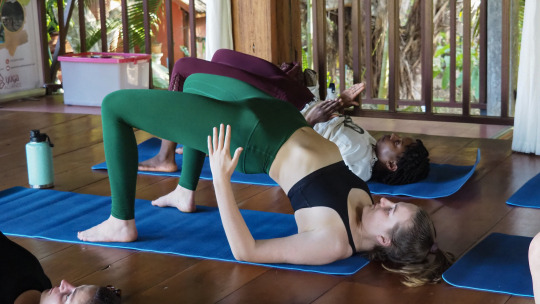
Welcome to our blog post on the 500 Hour Yoga Teacher Training in Chiang Mai - a transformative journey that will take you deeper into your yoga practice and help you unlock your true potential as a teacher. Whether you're a seasoned yogi looking to deepen your knowledge or someone who's just starting out on this path, this training will provide you with the tools, techniques and insights needed to take your practice to new heights. So sit back, relax and let us guide you through what promises to be an incredible adventure!
0 notes
Text

Are you ready to take your yoga practice to the next level and become a certified yoga teacher? Look no further than Chiang Mai, Thailand! With its tranquil beauty and rich cultural heritage, this city is the perfect destination for an immersive 500 hour yoga teacher training. But with so many options available, choosing the best program can be overwhelming. That’s why we’ve put together this comprehensive guide to help you make an informed decision and find the perfect 500 hour yoga teacher training in Chiang Mai. So let’s get started on your path towards becoming a skilled and confident yoga instructor!
#500 hour yoga teacher training in Chiang Mai#500 hour yoga teacher training in Thailand#500 Hour Yoga Course in Chiang Mai
0 notes
Text

A 500 hour yoga teacher training in Chiang Mai will cost you between $4,590 and $6,120. This includes your accommodation, food and drink, course materials, laundry and daily cleaning. It also covers your travel to and from the airport, as well as any other activities you might do while you're in town (such as sightseeing or shopping).
0 notes
Text

You can get all the benefits of yoga, through a sub-branch, which is better known as Karma Yoga. It is also a part of the course contents at Yoga Samaadhi school. Karma yoga denotes service to others. When you are of assistance to the others, you will feel a certain blissfulness within you. The 500 Hour Yoga Teacher Training in Chiang Mai is one of the best educational opportunities, that you can avail yourself of. The course will help you to treat each individual, including yourself as different. Thus, you will also learn to be more accepting and forgiving, in the process.
0 notes
Text
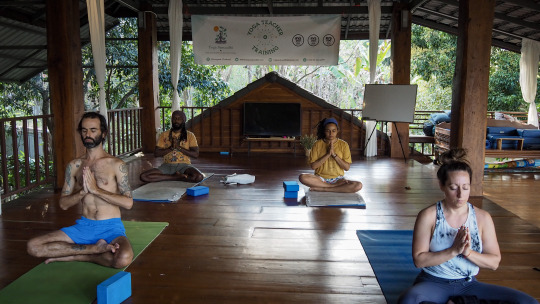
If you're interested in becoming a yoga teacher, then you'll want to attend one of these 500 hour yoga teacher training in chiang Mai. These courses are designed to teach students everything they need to start teaching yoga classes on their own. They cover topics such as anatomy, physiology, and yoga philosophy. The teacher training courses also include weekly lectures and plenty of opportunities to practice with the instructor.
#500 hour yoga teacher training in chiang Mai#500 hour yoga teacher training in Thailand#500 hr Yoga TTC in Thailand#500 hr yoga TTC in Chiang Mai
0 notes
Text
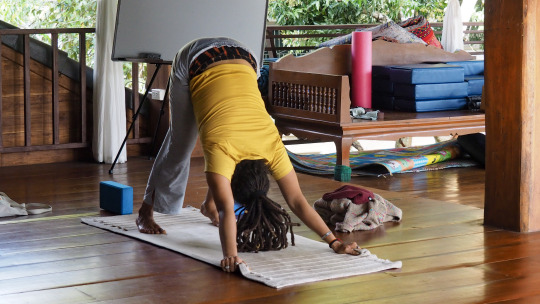
Our 500 Hours Yoga Teacher Training in Chiang Mai, Thailand is an intensive 51 days training course. The Yoga TTC course is a combination of the 200 Hours YTT and 300 Hours YTT. For those with a determined mind to become yoga teachers and prepared to invest time for their goal, we highly recommend taking this 500 Hours YTT program.
0 notes
Text
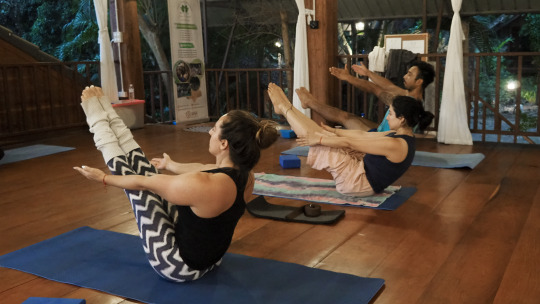
Our 500 Hours Yoga Teacher Training in Chiang Mai, Thailand is an intensive 51 days training course. The Yoga TTC course is a combination of the 200 Hours YTT and 300 Hours YTT. For those with a determined mind to become yoga teachers and prepared to invest time for their goal, we highly recommend taking this 500 Hours YTT program.
#500 Hours Yoga Teacher Training in Chiang Mai#500 Hr Yoga TTC in Chiang Mai#500 Hour Yoga TTC in Thailand
0 notes
Text
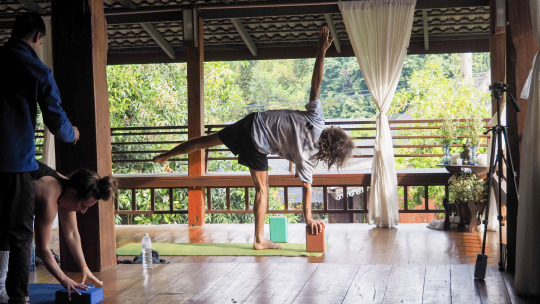
Our 500-hour yoga teacher training in Chiang Mai is the perfect way to deepen your practice and gain the skills and knowledge you need to become a great yoga teacher. This course is open to all levels of students, from beginners to those with some experience teaching yoga.
#500-hour yoga teacher training in Chiang Mai#500 Hr Yoga TTC in Chiang Mai#500 hr Yoga TTC in Thailand
0 notes
Text
There are many benefits to completing a 500 hour yoga teacher training in Thailand. One of the most obvious benefits is that you will be able to teach yoga to others. This can be a great way to share your love of yoga with others and help them improve their lives.
0 notes
Text
Yoga teacher training in Thailand is a popular choice for individuals looking to deepen their yoga practice, become certified instructors, and immerse themselves in a beautiful and serene environment. Thailand offers a wide range of Yoga Teacher Training (YTT) programs that cater to different styles and traditions of yoga. There are three main yoga teacher trainings available today as accredited by Yoga Alliance USA which is universally accepted an authentic learning: 200-hour Yoga Teacher Training (YTT), 300-hour Yoga Teacher Training (YTT), and Inclusive of previous two 500-hour Yoga Teacher Training (YTT). Chiang Mai is one of the best places for whole inclusive experience for a Yoga TTC.
0 notes